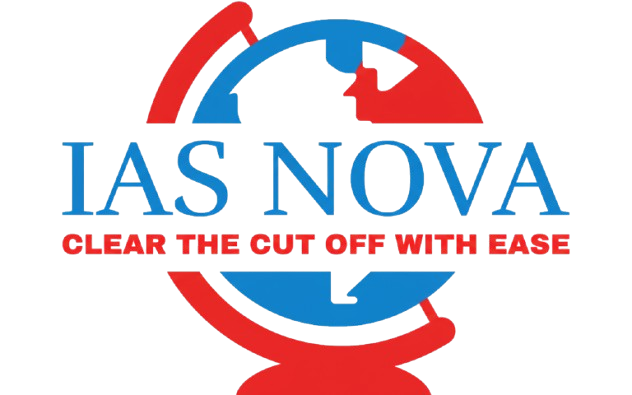The “Iron Cage of Bureaucracy” — Max Weber
1) What Weber Meant
Weber used the metaphor “iron cage” to describe the condition of modern individuals and institutions caught within systems of formal rationality—fixed rules, calculation, documentation, and hierarchical control. Bureaucracy is supremely efficient, but when it overgrows and colonizes social life, it traps actors in rule-bound, impersonal routines, narrowing moral choice and human meaning.
Core idea: Modernity’s triumph of legal-rational authority → pervasive bureaucratization → life conducted by technical rules rather than substantive values → loss of freedom, meaning, and spontaneity.
2) Why Bureaucracy Tends to Become an Iron Cage
- Instrumental rationality dominates: Means–ends calculation outcompetes tradition and charisma.
- Rule-dependence: Predictability and auditability demand ever more codified procedures.
- Scale & complexity: Large states/markets require standardization, producing formalism.
- Career incentives: Officials optimize for compliance, not outcomes (“play safe,” avoid blame).
- Document Fetish: “If it isn’t on paper (or the system), it didn’t happen.”
3) Formal vs Substantive Rationality (Weber’s Tension)
| Dimension | Formal Rationality (Bureaucratic) | Substantive Rationality (Value-Oriented) |
|---|---|---|
| Guiding Principle | Efficiency, calculability, rule-consistency | Ethics, justice, collective good |
| Decision Basis | Written rules, precedents, KPIs | Context, conscience, public interest |
| Strength | Predictability, uniformity, accountability | Moral responsiveness, legitimacy |
| Risk | Red-tape, goal displacement, dehumanization | Inconsistency, bias (if unchecked) |
Iron cage = when formal rationality systematically displaces substantive rationality.
4) How the Iron Cage Forms (Process Flow)
5) Organizational Symptoms (Spotting the Iron Cage)
| Symptom | What it Looks Like | Consequences |
|---|---|---|
| Rule Ritualism | “Process over purpose,” file-centric culture | Delays, citizen frustration |
| Goal Displacement | Meeting targets > solving problems | Perverse incentives, data gaming |
| Impersonality Overreach | “Computer says no” | Loss of empathy, injustice at margins |
| Siloing & Over-specialization | Narrow task views | Coordination failures |
| Audit Explosion | Excessive documentation & reviews | High transaction costs |
| Risk Aversion | Fear of blame > public value | Innovation freeze |
6) Human Experience in the Iron Cage
- Alienation: Workers become role-holders, not persons; citizens become file numbers.
- Disenchantment: Values, traditions, and emotions are downgraded in decision-making.
- Loss of Autonomy: Discretion shrinks; officials “do as rules say,” even when suboptimal.
- Ethical Blind Spots: When “compliance = virtue,” outcomes can be morally perverse.
7) Links to Other Thinkers (Useful for 10-markers)
- Merton: Bureaucratic dysfunctions—ritualism, trained incapacity.
- Crozier: The bureaucratic phenomenon—rigidity and power of “zones of uncertainty.”
- Habermas (extension): System colonization of lifeworld—procedures crowd out communicative reason.
- Ritzer: McDonaldization—efficiency, predictability, calculability, control (the iron cage 2.0).
8) Public Administration/UPSC Angle (Indian Context friendly)
- Citizen Services: SOPs and portals improve consistency but can ignore contextual hardship.
- Regulatory Bodies: Compliance checks ensure safety but may smother entrepreneurial activity.
- Welfare Delivery: Eligibility proof & audits reduce leakages yet risk exclusion errors.
- Policing/Revenue: Quota-like performance metrics can misalign incentives.
(Use contemporary, non-controversial examples in the exam: e-governance queue logic, document proofs, multi-level approvals.)
9) Escaping or Softening the Cage (Weber knew it’s sticky; aim is tempering, not abolishing)
| Lever | Mechanism | UPSC-usable Illustration |
|---|---|---|
| Discretion with Guardrails | Structured officer discretion + reasoned orders | Speaking orders, case conferences |
| Outcome-based Management | Balance process KPIs with impact KPIs | Learning reviews, problem-driven iterations |
| Transparency & Accountability | RTI, dashboards, social audits | Proactive disclosure, grievance analytics |
| De-silo Coordination | Mission mode teams, single-window systems | Convergent schemes, joint KPIs |
| Digital by Design | Automate routine; keep “human-in-the-loop” for edge cases | Escalation for vulnerable groups |
| Ethics & Service Orientation | Training in constitutional values, citizen-centricity | Code of ethics; public hearings |
| Simplification | Sunset clauses, periodic rule-pruning | Janbhagidari consultations, regulatory guillotine |
10) Model Answer Scaffold (150–200 words)
Weber warned that modern legal-rational authority, while efficient, risks enclosing actors in an “iron cage” of formal rationality. As scale and complexity grow, organizations extend rules, records, and oversight, rewarding compliance over outcomes. This yields ritualism, goal displacement, impersonality, and alienation—what later scholars called bureaucratic dysfunctions. The cage forms when formal rationality crowds out substantive rationality (justice, ethics, public interest). Yet bureaucracy is indispensable for modern governance; the task is not abolition but tempering: calibrating discretion with reasons, balancing process and impact indicators, improving transparency and grievance redress, coordinating across silos, and simplifying rules with periodic pruning. Thus, Weber’s metaphor remains a timely caution: pursue efficiency without sacrificing values, empathy, and democratic accountability.
